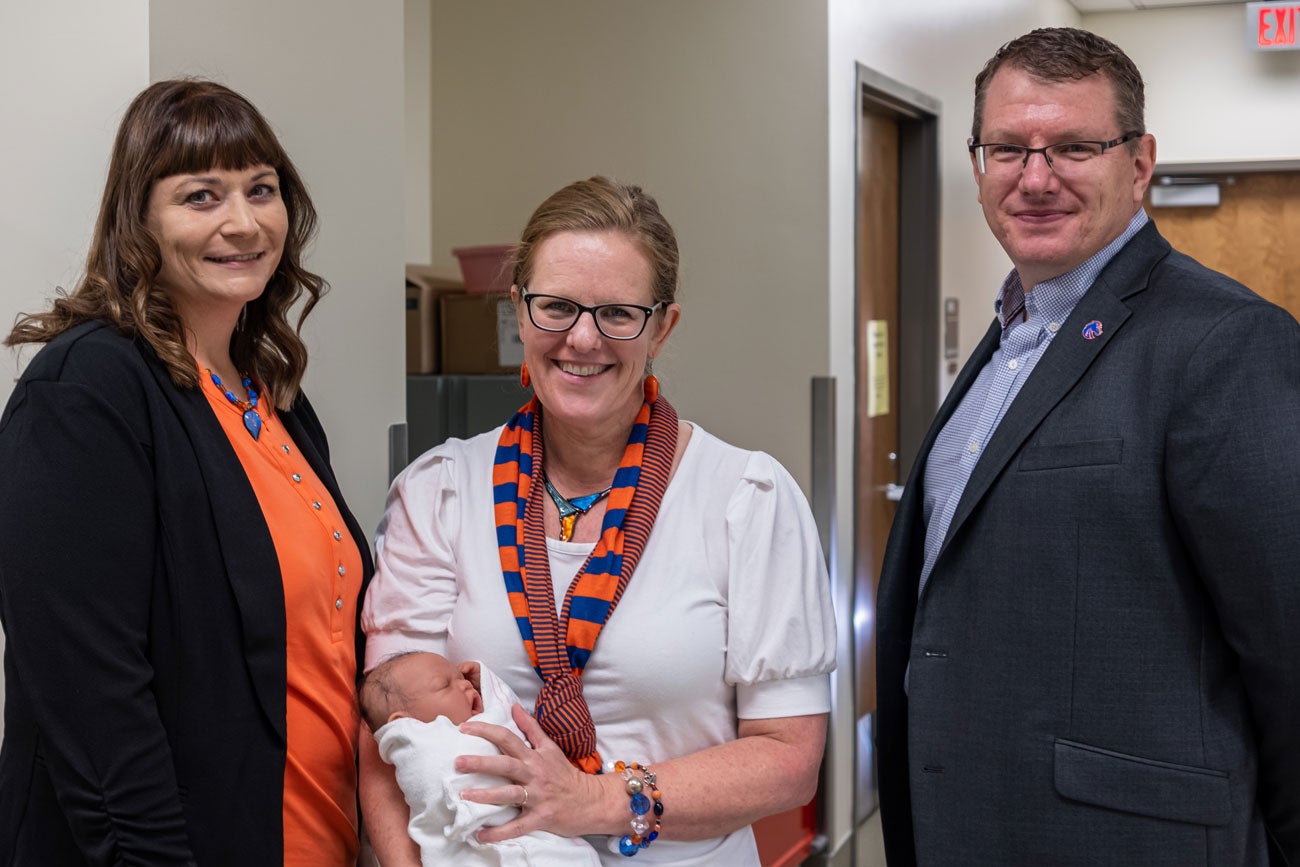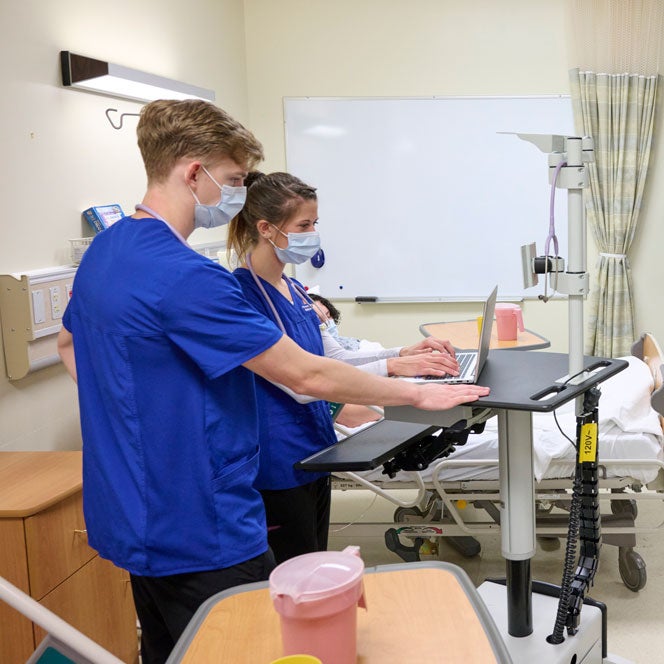With the ever-expanding realm of virtual healthcare, the School of Nursing’s simulation research team focused on incorporating it into nursing simulations. In the last year, they have developed at least one telehealth-related scenario for every semester of the pre-license nursing program.
But the research team wanted to know if nursing faculty feel that virtual care is something they need to teach and, if so, how ready are they to engage in it? Are faculty actually supportive of virtual care technologies and education?
Their most recent publication says: absolutely.

“Faculty understand and see that this is an important area that we need to include in the curriculum,” said Jason Blomquist, a clinical assistant professor and member of the research team. “They also were pretty honest in that most of the faculty in their careers have not had the opportunity to work with it or experience it, so they didn’t necessarily feel prepared and needed some training. But they were open to being trained in these technologies so that we could support our students.”
The research team envisions training faculty through didactic content, simulations and collaborating to revise curriculum.
Other members of the team include clinical associate professor Darci McCall; director of simulation-based education and research Kelley Connor; associate professor Cara Gallegos; and professor emeritus Janet Reis.
What is virtual healthcare (and why teach it)?
Before teaching at Boise State, Blomquist spent three years as a director of telehealth services at St. Luke’s Medical Center. He was part of the team implementing and operationalizing their virtual care and telehealth programs. Now Blomquist brings that expertise into developing simulations that mimic real-world applications of technology.

“We often think of telehealth as a virtual visit with your doctor over a video call, and I think that’s a very narrow scope of what it actually is these days,” Blomquist said. “We’re seeing more and more of it being used as a workforce aid for our nursing and provider groups, especially as we’re seeing such a shortage in our hospital systems.”
What might this look like? Blomquist gave the example of a virtual nurse supporting an in-person bedside nurse with tasks like admissions or rounding. He underscores the significance of preparing students for these kinds of environments.
“It’s a very different style of working,” Blomquist said. “Giving [students] exposure to that so they’re ready for it when they get out into the workforce is important.”
Research team member McCall also works at St. Luke’s with new graduates from all different nursing schools.
“Many of them don’t even know about telehealth or how, as employees of St. Luke’s, it can make their life easier,” she said. “When the telehealth teams come in and talk to them about what [St. Luke’s] is doing with telehealth, and how they can use it as nurses, they’re excited. Bringing that into the School of Nursing so they know what they’re getting into is really cool. It’s very needed.”
Ultimately, the goal of teaching virtual healthcare technology is not only to help students become proficient at it, but also to help them seamlessly integrate technology with excellent nursing care.